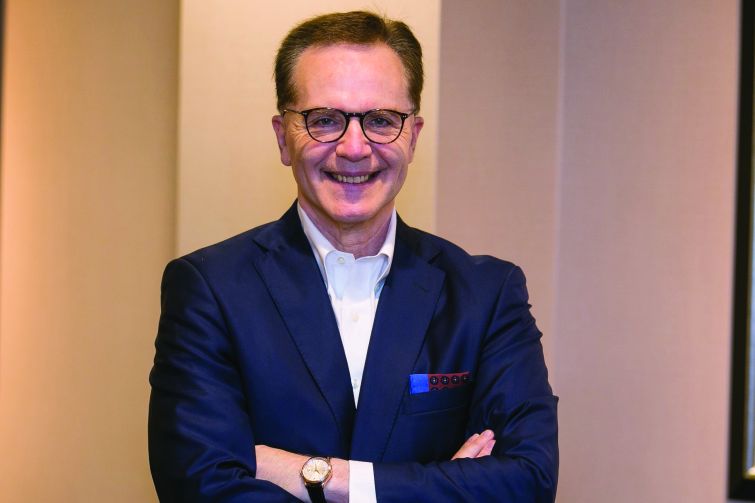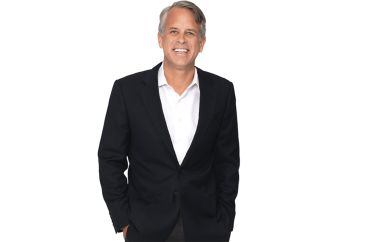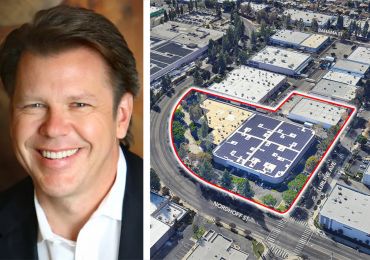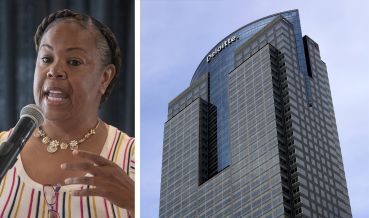Verde Capital’s Jake Reiter Talks Distress, Workforce Housing Reaction to COVID
By Mack Burke February 23, 2021 4:42 pm
reprints
Verde Capital co-founder Jake Reiter started his firm a decade ago. His thesis was built around providing institutional capital to private multigenerational families who exhibited success working with workforce multifamily, student housing and urban mixed-use properties.
“The focus here was exclusively in the private space, with large families — REITs [real estate investment trusts] and funds — that consume large amounts of equity capital for development and adaptive reuse in the commercial real estate space,” he said.
Verde’s portfolio is strengthened by its disciplined, defensive posture. It’s mostly focused on direct investments in workforce housing in high-growth, secondary markets alongside experienced operating partners, but the firm also engages in note purchases and equity recapitalizations, and seeks out value-add and core-plus opportunities for acquisition and development.
“We don’t take on high leverage, which gave us a large cushion to take on 30 to 35 percent losses across the portfolio [as a result of the pandemic],” Reiter said. “We had occupancies in the high 90s — 96 to 97 percent.”
Verde’s goal is to have “a mixture of development and cash-flowing assets and keep leverage low,” Reiter said. “[We focus on] safe asset classes and not buying when it’s too hot. You hope you build a fortress balance sheet that can withstand stress.”
The firm is now gearing up to jump into the distressed space via a fund vehicle that will target multifamily and mixed-use assets that fit its criteria — with a couple wrinkles.
Reiter spoke with Commercial Observer last week to talk about targeting distressed multifamily, building out a portfolio to withstand the unknown and how workforce housing shook out in 2020.
Commercial Observer: Verde doesn’t operate under a fund structure, and usually aims at buying and holding long term, but you’re launching a fund to target distressed multifamily opportunities?
Jake Reiter: I’m working with friends in the fund space who’ve successfully raised capital as well as partners in the distressed space to come together on a distressed urban strategy, where we’ll be aligning fund capital with operating partners on the ground. It’s a fairly simple notion, but it’s a great addition to the platform.
In our view, the distressed space has somewhat of a finite life, maybe a three-year investment period, where distressed assets emerge and show themselves. Then, call it, two years to reposition the assets, hold them through stabilization, and then liquidate the portfolio within a 10-plus-year timeframe, and we can have some optionality on the exit, whether that’s a roll up and sell to another fund or to a real estate investment trust — or we can sell the assets one-off — but we’re very excited about it.
What will you be targeting?
We’ll be targeting smaller, mixed-use urban plays, where the owner typically owns a building that had a business in it, that now, through COVID-19, no longer has a business, and the property is zoned for multifamily. We can work with that owner — we can keep them in the deal or buy them out. They’ve typically had the building for a long period of time, so the debt basis may be nonexistent, or low. There’s a real opportunity, we believe, in that narrow, yet deep, pool for potential sellers to be helped out of a difficult situation, and at the same time, add value to the buildings. Ultimately, with the business they had [in place], it can come back in or we can re-tenant the commercial space.
Verde covers a lot of ground, geographically speaking, but are there any particular urban centers that you and your partners see as starting points?
We think distress will be in a number of urban areas, but I think we’re going to start in metro Philadelphia. As it relates to Opportunity Zones, we’re focused right now on closing a large transaction in Downtown Sacramento, and we’re looking at a significant opportunity in Brooklyn. Our view is that secondary, urban cities that have less density, yet sustainable demand drivers, [present the best opportunities for us].
If you look at Sacramento, there are five universities represented there, with the University of California system; it’s the state capital; there’s a 1,500-unit hospital going up next to the site; we’re in at an exceptionally good basis; it’s right across the street from one of the state pension funds and five blocks from the state Capitol; and it’s in an Opportunity Zone. And Brooklyn’s the same thing: the asset is in Downtown Brooklyn, across from the train station.
From a development standpoint, we’re really focused on that, because it’s really almost impossible — if not impossible — to buy assets today at what we believe are reasonable prices to make money; that is really where the growth markets like Charlotte, Durham, Raleigh and Austin, which we think are not only benefitting from COVID-19, and the financial stress and exodus from high density to less density, [come into greater focus].
Amid COVID-19, what would trigger you and your partners to put an asset on the block for sale?
More often than not, we’ve been approached by buyers who are willing to pay more than the higher end of our valuation from when we do our mark-to-markets. At a certain point, the frothiness in the market on the buy side tends to be higher than the upper limits of what we think those assets are worth. Those tend to create conversations internally on whether it makes sense for us to hold onto them anymore.
Last year, we sold about six assets, most of which were unsolicited offers and some were paid all cash. Large funds came in and said, “Look, no contingencies, we’ll do our due diligence and do all cash.” The pricing was such that the cap rate compression was such that it created valuations that were well in excess of what we [figured it to be]. There was one case, where a REIT came in and bought a portfolio that was 28 percent higher than we had on our highest mark-to-market valuation spectrum. So, we said, “Sure.”
From a sales standpoint, sometimes we’ll see competition coming into a market and we’ll say, “Hey, in two or three years we’re going to see a lot of product out there, we might as well get out now.” Sometimes, we see markets where we’ve done a value add or developed something, and maybe the economy seems to have stagnated, or a demographic, over time, is going to change, so we try to be thoughtful about how long we hold, what we’re holding, and what’s a transgenerational asset, and what’s a buy- or build-and-sell, and why.
But, there’s always a pretty efficient market out there for buyers. There’s less pruning of the portfolio, because we don’t operate under a fund structure and we don’t have a finite life; we can hold assets as long as we want, and we do.
How do you wrestle with the way the multifamily financing space unfolded in 2020?
Absent liquidity to house people, and absent loans for investors who put money back into projects and kept them actively employed, it would amplify the housing crisis for renters that need places to live — housing is an essential need in this country. Providing liquidity through the crisis and doing it confidently and early gave confidence to the industry. We had confidence early on with COVID-19 that liquidity would not be an issue, so that took a major risk off the table. If you think about the renter, it was a coalescing of pure interest. Liquidity was key.
At what point do you and your partners look at underlying property level data and think “we’re in trouble”? And what are the contingencies?
We always do analysis of the renter pool, whether it’s on a development deal and who the renters could be based on the existing demographic or whether we buy something — who is the renter, where are they employed and what are their credit scores and histories? — and I think what we learned from drilling down from a monthly look at collections and retention at our projects was that renters wanted to make rent payments. And we wanted to be helpful within that very small population of renters within our portfolios that had trouble.
We were out very early through our operating partners saying to renters across our portfolios, “How can we be helpful?” We were looking at payment plans, how we could stretch payments, how could we direct them to agencies that could help them with rent payments. We had much higher retention in certain parts of the portfolio — because people weren’t moving at the height of the pandemic, unless there was a forced need — as high as around 80 percent, up from around 40 to 50 percent, which is a normalized number. We learned how closely knit the alignment really is among renter, hard working maintenance staff and accounting and management at complexes, to making sure our debt partners are taken care of, to making sure renters could stay in homes.
If we had to make adjustments, the first was not paying ourselves. So what we did in the [first two quarters of 2020] was we did not make equity distributions to investors, and we explained to [them] that we didn’t know if we could make payments. Payments were first going to go to staff and working with renters and making sure our debt partners were taken care of. And because we don’t take on high leverage, we had a large cushion — probably 30 to 35 percent across the portfolio — where we could have had renters fall out, which ultimately did not happen. We had collections and occupancy in the high 90s. We went from monitoring the front end monthly to weekly. We educated ourselves more deeply on where people worked and in which industries and segments, and how much vulnerability we had in the portfolio, which centers around hospitals and universities and sustainable demand drivers around transit hubs. And we didn’t have a lot of vulnerability. It turns out that investment thesis was prescient in the sense that the portfolios are built to withstand severe financial distress without compromising the platform.
Building a portfolio is about building it brick by brick, consistently from the first investment to your 40 investment, and not waiting until something happens and then realizing you’re overleveraged and saying, “Hey I have to work for my lenders and I can’t make payroll.”
We don’t take on a lot of leverage, we’re diversified in geography and we keep close our discipline with demand drivers. It’s constructed to withstand a crisis of some magnitude and it did withstand the storm.


